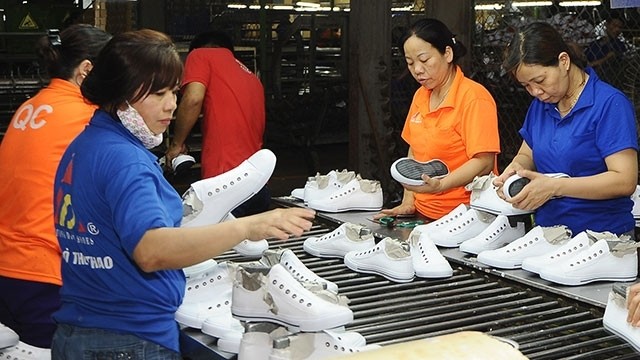Unknown on familiar market
ASEAN is the Vietnam’s key export market, with high growth rate. After seven years, from 2010 to 2017, Vietnam's export to the market has more than doubled, from US$10.3 billion to US$21.7 billion. Among them, Thailand, Indonesia, Malaysia and Singapore are the markets that account for most of Vietnam's export value to ASEAN.
ASEAN has high demand for imported goods and raw materials for production and consumption. The market is large, with a total population of 636 million; GDP reached US$ 2.76 trillion. When the ASEAN Trade in Goods Agreement (ATIGA) officially came into effect in 2010, most of tariff lines were lowered to 0%, which is one of the favorable conditions for Vietnam's export growth to ASEAN.
However, according to Nguyen Duong Kien, Deputy Head of the East-South Asia, South Asia and Regional Cooperation Office (Asia – Africa Market Department under Ministry of Industry and Trade), ASEAN is a close market, which has similar consumer culture and is consistent with products of Vietnamese enterprises, but Vietnamese businesses did not take advantages. Vietnam always has a trade deficit with ASEAN countries (an average of US$ 4 - US$6 billion). The rate of utilization of tariff preferences in the region is still low, reaching at 30%. It seems that these opportunities are still only on paper, in fact Vietnamese enterprises are not easy to grow regarding exports.
Reviewing the process of taking advantage of opportunities from the ASEAN market, Tran Thi Ha, of the National Institute for Finance under the Ministry of Finance, said that ASEAN is Vietnam's fourth largest export market, behind only the European Union (EU), the US and China. However, according to the General Department of Vietnam Customs, in 2016, when the ASEAN Economic Community (AEC) officially came into effect, the export turnover of agriculture-forestry-fishery to ASEAN countries was only just over US$ 1.6 billion, a decrease of 20.3% compared to 2015. In 2016, only about 9.8% of Vietnam's export goods entered ASEAN, much lower than the regional average export rate of 24%.
Lack of professional approach
Enterprises have not taken full advantage of tariff preferences when exporting goods to regional markets. Specifically, according to statistics of the Vietnam Chamber of Commerce and Industry (VCCI), the rate of enterprises taking advantage of ATIGA’s incentives in 2016 is 31.8%. This is higher than the 24.2% of 2015, but the rate is still low. In addition, the understanding of domestic exporters on AEC is limited. Only 46.79% of enterprises actively seek information about AEC; nearly 94% of enterprises know about AEC, among those only 16.4% really understand the commitments of this economic and trade sector.
 |
Enterprises should note that the quality of a country's products are always very impressive in the eyes of consumers.
According to Deputy Head Nguyen Duong Kien, one of the reasons why Vietnamese goods find it difficult to enter ASEAN is because Vietnam does not have any retailer that can penetrate these countries. In other words, no business is a sponsor to bring Vietnamese goods into ASEAN. Another problem is the quality of goods. It seems that many Vietnamese companies are still viewing ASEAN as a low-lever market. Enterprises should note that the quality of a country's products are always very impressive in the eyes of consumers. More than anyone, businesses must actively explore the requirements of each market and always consider product quality as the leading factor. Besides, although there is no distribution system for Vietnamese people, enterprises can rely on the distribution system and retail shops of overseas Vietnamese to bring goods to consumers in ASEAN.
Associate Professor, Dr. Pham Tat Thang of Vietnam Institute of Trade Research under the Ministry of Industry and Trade said that it was time for businesses to pay more attention to improving quality, product design and brand building to meet the demand of markets in ASEAN.
Enhancing trade promotion
In order to increase export to this market, the first factor, according to Nguyen Duong Kien, is the initiative of enterprises in studying the demands of specific goods and standards related to their field of activities and production items in order to have a suitable strategy. The businesses should choose suitable and good quality products when entering into the target markets. In addition, businesses should also note that the ASEAN market has a number of Muslim countries.
According to Tran Thi Ha, the State should implement trade promotion activities through investment and trade promotion centres, creating necessary connections at the national level, and in businesses, with regional countries in order to enhance accessibility of the market for export enterprises. Relevant agencies and departments also should to study and disseminate new regulations and policy changes of regional countries on the import of goods for enterprises, helping the enterprises to update promptly. That will help businesses better penetrate this market. Along with that, for Vietnamese goods and products to export to markets, enterprises need to have a business strategy, closely follow the consumption trends of the people of each ASEAN country, and link with domestic distributors; because of the products of each country, every business is part of the regional value chain or global value chain.
It is necessary to consider trade promotion as a "key", according to Le Hoang Tai, Deputy Head of the Trade Promotion Agency, under Vietnam's Ministry of Industry and Trade. The Ministry of Industry and Trade is committed to creating maximum advantages for enterprises to access ASEAN. Every year, the Ministry coordinates many domestic and foreign agencies to implement trade promotion activities to the market.
















